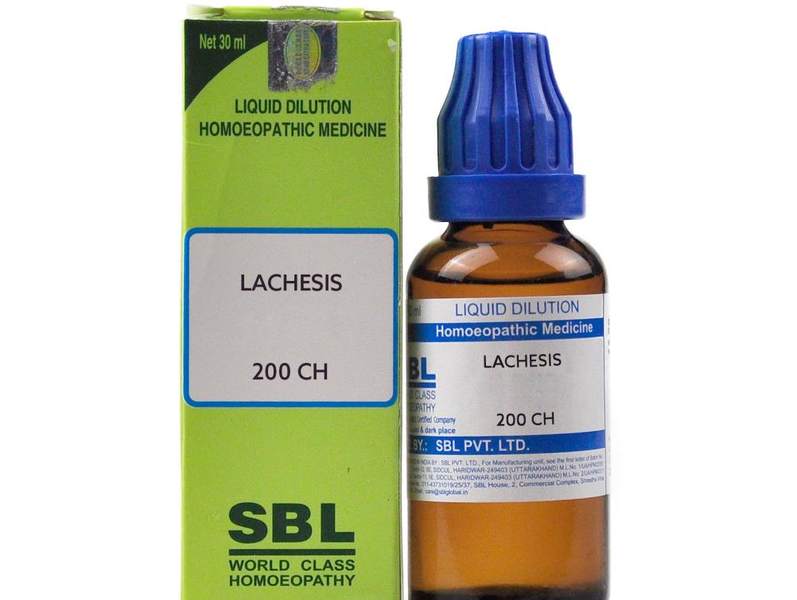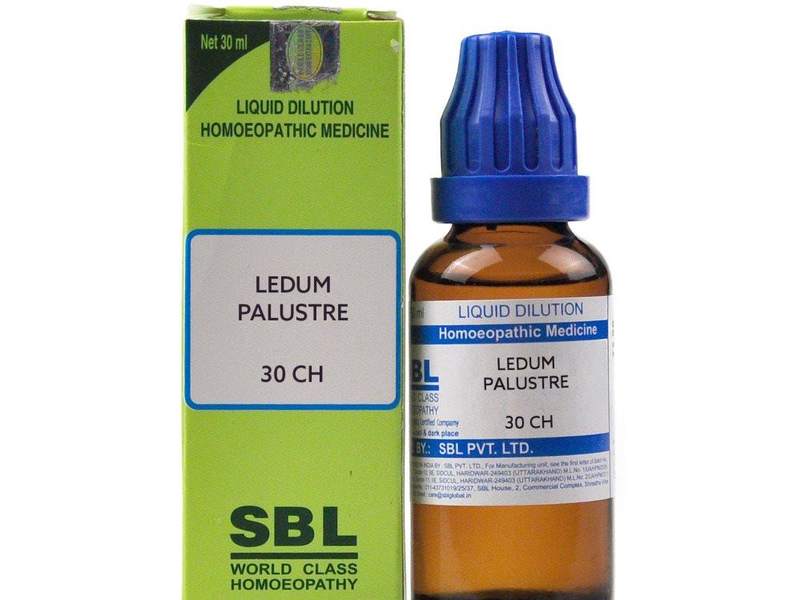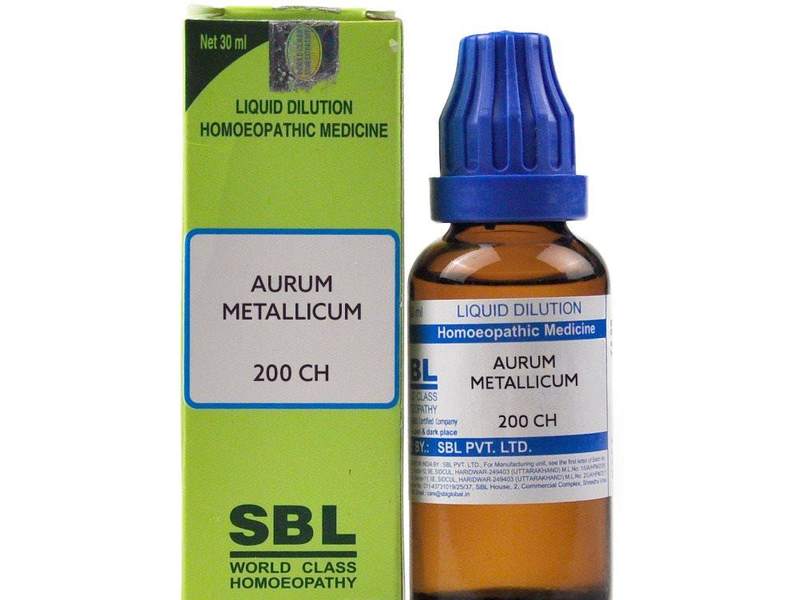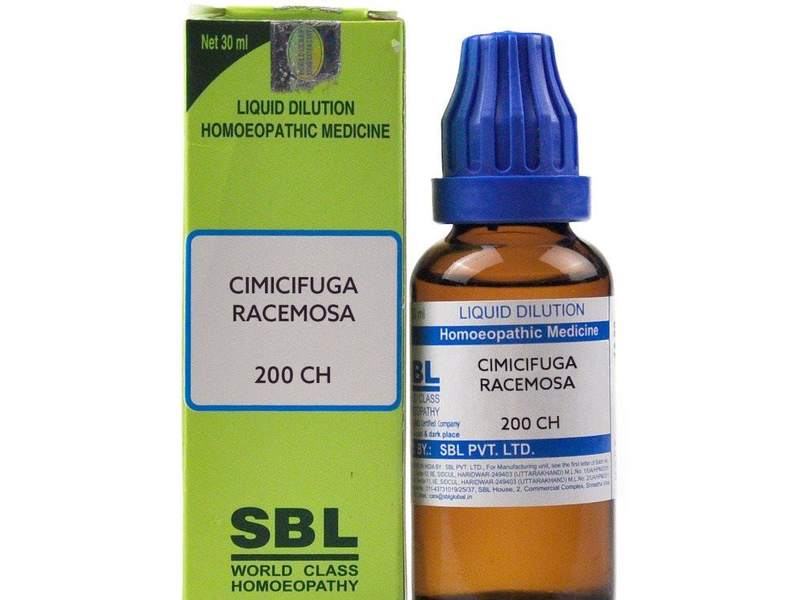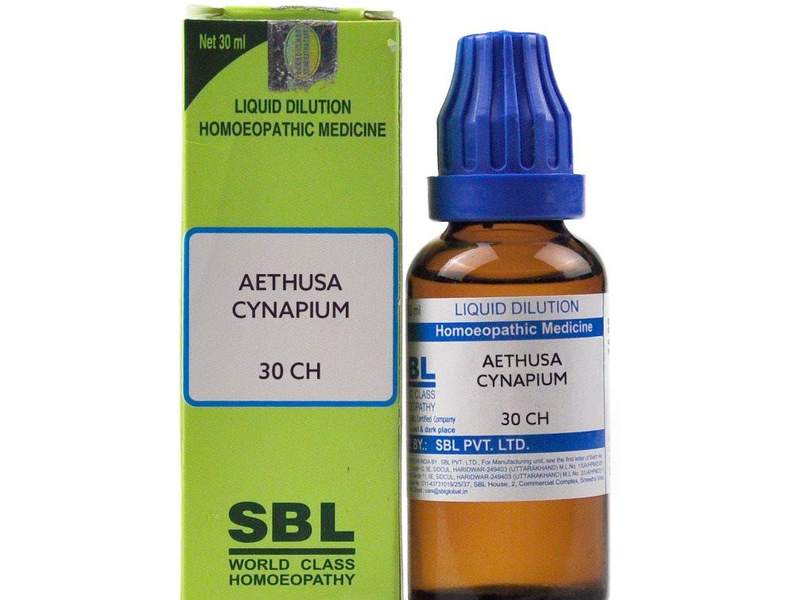Lachesis Mutus 30c Uses, Benefits, Antidote – Lachesis Mutus Materia Medica
₹1,620.00 Original price was: ₹1,620.00.₹1,120.00Current price is: ₹1,120.00.
Lachesis Mutus 30c Uses, Benefits, Antidote: A distinctive trait of Lachesis is the presence of jealousy, particularly in situations where an individual seeks to outdo a competitor, such as a woman whose husband is involved with a younger girlfriend. In this scenario, she experiences a sense of vulnerability as she compares herself to her younger and more attractive rival.
The individual perceives conspiracies directed against them, leading to heightened suspicion of those in their vicinity. Their survival strategy revolves around outsmarting rivals, employing manipulative tactics for this purpose. A notable characteristic is the patient’s excessive talkativeness, continuously engaging in conversation. They initiate topics, abandon them abruptly, and transition to another subject. In their haste, sentences are left incomplete, assuming that the listener has grasped the intended meaning, thereby maintaining a rapid pace in their speech.
The individual employs very informal language but consistently fails to finish any sentence. The patient exhibits traits of jealousy and suspicion, particularly concerning her husband’s interactions with other women, harboring a significant level of envy. Suspicion extends not only to her spouse but also to her own children and even the doctor. She entertains doubts that the doctor intends to harm her by adding poison to the medication, and she suspects her relatives of conspiring to cause her harm.
When the patient is on the move, they frequently glance over their shoulder, checking to see if anyone is following them. The girl believes that when her friends engage in hushed conversations, they are discussing and plotting against her, with intentions to cause her harm. The patient experiences a form of religious fanaticism, a manifestation more prevalent in women than in men.
She believes that a divine force is exerting control over her, and she receives commands from this divine power. A prominent symptom of this remedy is an intolerance to touch. The patient finds it challenging to wear a collar or necktie, opting to keep the buttons of their kurta open at all times. When questioned about this, they explain that wearing a collar or necktie induces a sensation of suffocation, as if someone is gripping their neck. Closing the button at the neck of the kurta makes them feel as if they will struggle to breathe. Although it may seem unclear why throat pain troubles them so significantly, in Lachesis, similar to the extraordinary weakness in Arsenic, throat pain becomes exceptionally pronounced. The patient avoids consuming hot tea as the heat exacerbates their condition.
In the category of Lachesis, we encounter the following symptoms: Jealousy, incessant talking, rapid shifts from one topic to another, mocking others, a longing for entertainment, Lachesis aligns with a summer nature, heightened sensitivity to heat, particularly in tight clothing around the neck. Intolerance of being in close proximity to others is observed. Sunlight exacerbates the discomfort, and the problem intensifies after sleeping. The inclination to engage in household chores or work diminishes. There is a desire to retreat into one’s imagination, leading to a reluctance to socialize, coupled with religious fervor. The rapid movement of the tongue in and out mirrors that of a snake.
- Unwarranted jealously and suspiciousness, malice, hides, spits, mocks, revengeful, intolerance to authority and great loquacity
- All complaints, mental and physical are worse after sleep and better with the onset of menstrual flow
- Sense of constriction everywhere, suffocative feeling, must be fanned but slowly and from a distance
Source: Animal kingdom
Synonyms: Surukuku snake poison, Trigonocephalus lachesi, Deadly Bushmaster
Family: Crotalidae
Prover: Dr C. Hering in 1828
Duration of Action: 30 to 40 days
Miasmatic Background: Psora
Temperament: Sad and melancholic
Diathesis: Haemorrhagic
Thermal Relationship: Hot patient
Introduction and History: There are about 2,500 species of snakes in the world, predominantly found in the warm climates and bushy regions of the tropics. Of the 216 species of snakes found in India, only 52 species are poisonous.
‘Greater the poison, greater the remedy.’ Lachesis is one of the most valuable remedies in homeopathic materia medica. It is a constitutional, deep and long acting, polychrest remedy. ‘Trigonocephalus’ word is derived from ‘trigono’ meaning ‘triangular’, ‘cephalus’ meaning head. The head of the snake is triangular. Hence, it is called as trigonocephalus. This remedy was proved by Dr C. Hering in 1828, from the virus of Surukuku, the Deadly bushmaster of South America. He handled the deadly snake himself and gave out the symptoms himself after coming to consciousness. This medicine was proved at great risk to
his life.
Snake venom in ancient medicine: The dried snake venom has been used as medicine since long. The practitioners of South African states used to use dried snake venom for the treatment of epilepsy, impotency, old ulcers, gangrene, bleeding episodes and bleeding diseases. In India, there were incidences of use of dried snake venom in small doses for snakebites, old ulcers, piles, fistula but no authenticated record is available. This was in practice in Bengal province. Now it is in Bihar, Orissa, West Bengal, Bangladesh, Manipur and Tripura by quacks, and these quacks were known as Chandis. Thanatophidia of India by Sir Joseph Fayrer gives ample notes on such uses and many medico-legal cases.
Evolution of snake venom as antivenom: Between 1859 and 1869 there were 15000 to 20000 recorded deaths in the Bengal province which gives enough matter for thought. After a long series of experiments on Indian serpents, Dr L.A. Woddell established the hypothesis that ‘to afford indications for combating the action of snake venom on man……. immunity may be acquired by inhibition of small doses of the venom’ and the antivenom came into being.
Long before this observation, effects of small doses were established by Dr Samuel Hahnemann. Lachesis came into being on 28 July, 1828. Of course, the efficacy of Lachesis in snake venom poisoning is yet to be proved – both experimentally and clinically.
Description: The Surukuku snake or Bushmaster is found in the hot countries of South America. It is seven feet long and its poison fangs are nearly one inch long. The skin is reddish-brown while the back is marked with black and large spots, each of which enclosed two spots of the colour of the body. The poison resembles saliva. The poison is odourless, tasteless and somewhat greenish-white in colour.
General Effects of Snake Poison: Ophidians are characterised by their paralysing action upon the nerves, disintegrating effect upon the tissues and the decomposition of blood. The effect of snake bite falls within three groups corresponding to three leading forms of disease which the potentized venom will cure.
(1) Direct poisoning of the nerve centres without local inflammation or blood changes.
(2) The great shock of the poison is first felt in the centre of the cord, then in the medulla involving the functional integrity of the brain, the pneumogastric producing cardiac and respiratory symptoms and finally it affects the sympathetic nervous system. Occasionally there are convulsions resembling those of epilepsy but death is almost instantaneous or occurs in a short time, due to paralysis of the heart. The victim, surviving the first shock exhibits symptoms which are haemorrhagic in nature like, ecchymosis, oozing of dark thin blood from the orifices, haematogenous jaundice, fever, flushed face, injected conjunctiva, thirst, anorexia, spongy bleeding gums and sore throat. Other symptoms are inflammation, agonising pain, erysipelas, swelling at the seat of the injury rapidly passing on to gangrene, foul ulcers, absorption of the venom by the lymphatics, inflammation of the lymphatic gland or through the veins resulting in pyaemia.
(3) On the mental plane, at first there is anxiety, mental excitability and hallucinations. Later, mental confusion, stupor, low delirium, numbness, twitching, faintness, trembling, irregularities in circulation and apoplectic congestion with great prostration or paralysis may arise.
Preparation: Triturations are prepared from the snake poison with sugar of milk.
Constitution and Physiognomy: It is particularly suited to emaciated and thin persons, old toppers; broken down constitutions; during climacteric age, melancholic, rather fleshy women with a blue and purple look.
Ailments From: Bad effects of poison, wounds, post mortem, fright, jealousy, disappointed love, vexation, long lasting grief, quinine, sorrow, sprains, injuries, suppressed menses, alcohol, onanism, loss of vital fluids, etc.
Seat of Action (Pharmacodynamics): Mind, nerves, vasomotor and pneumogastric nerves, sympathetic nervous system, blood, circulation, heart, throat, female genital organs, vertex, left side, skin, kidneys, mucous membranes, etc.
Doctrine of Signature
- The snake’s tongue is not steady when protruded. Similarly, trembling of the tongue when protruded and loquacity are observed in the patient.
- The snake always protrudes its tongue. Like wise, the patient’s mouth always remains open and he repeatedly protrudes his tongue.
- Snake moves in a zig-zag manner. Similarly, the patient’s thinking is never straight, it is always in a Zig-Zag manner.
- A snake remains curled and silent in winters. So also, almost all the patient’s symptoms disappear during winter season.
- The snake starts moving in spring. So also, the symptoms reappear during spring.
- It is said that the snake is revengeful. Similarly, the patient is also revengeful.
- The Snake does not tolerate anybody to come near. The patient is also hypersensitive.
- The stools of a snake is black and offensive. Similarly, almost all Lachesis discharges are dark and offensive.
- During summers, the snake remains in cold places. Like wise, the patient is ameliorated by indirect fanning from a distance.
Active Principles (Chemical Constituents): The normal function of snake venom is to immobilize the prey and to assist in digestion. It therefore naturally contains a number of toxic substances and enzymes. Snake poison is nothing but polypeptide (protein) which contains 20 per cent zinc oxide. It also contains toxalbumins and several toxic principles, such as the following, some of which may be oxidized by potassium permangnate solution:
- Fibrinolysins
- Proteolysins
- Neurotoxins
- Cholinesterase
- Haemolysins
- Thromboplastin
- Agglutinins
- Cardiotoxins
- Coagulase, hyaluronidase
- Heamorrhagin
- Cytolysin (acts mainly by enzymatic destruction of the red blood cells, endothelial cells of the vessels, leucoucytes, nerve cell, etc.)
Physio-pathological Changes (Pathology)
- It acts on the peripheral nerves producing locally, hypersensitiveness of the body due to irritation of the peripheral nerves.
- It acts upon the pneumogastric nerve causing irritation of throat, larynx, bronchus and heart.
- It has great action on blood. It disorganises and decomposes the blood, making it more fluid and non-coagulable, resulting in haemorrhage. Hence, Lachesis has a haemorrhagic tendency which is marked. Purpura, septic states, diphtheria.
- It has a poisonous action on the nerve centres producing great prostration, convulsions and unconsciousness.
- Due to irritation of the peripheral nerves, there is inflammation of an asthenic and malignant character that is, cellulitis, erysipelas, gangrene, abscesses and pyaemia.
- Due to the action on blood it produces ecchymosis and jaundice.
- Due to the action on the nervous system it produces a paralytic condition.
- It acts on the skin and produces skin diseases.
- It has great action on female genital organs during the menopausal period.
Characteristic Mental Symptoms (Psychology)
- Patient is very jealous and suspicious. This is the most important symptom of this medicine. Suspects everything around her. Dread of death, fears going to bed. Fears being poisoned.
- Weak memory, inability to think. Feels she is full of wickedness and has committed a serious and unpardonable crime and sin; that she is going to die and will go to hell.
- Talks, sings, whistles, makes odd motions, is proud.
- Peevish, disposed to be morose or to quarrel. Suicidal mood, tired of life.
- Delirium at night, muttering, drowsy, has a red face; slow, difficult speech and dropped jaw.
- Dreams of snakes, of own death and funeral. Thinks she is dead, and that preparations are being made for her funeral.
- Thinks herself pursued by enemies, fears that the medicine is poison.
- Great loquacity, wants to talk all the time, but there is no relevancy or consistency, no head or tail, jumps from one idea to another, one word often leads into another story. This maybe called as frantic loquacity.
- Great disposition to feel sad, ecstasy, great apathy and extraordinary weakness of memory.
- Thinks that he/she is under superhuman control and has power to curse or bless. Even has command over others and actually expects that others should obey him/her.
- Patient possessed of some religious mania and insanity. Sometimes patient is melancholic, sad, unhappy, depressed and sometimes overjoyed.
- There is marked anguish of mind which is somewhat ameliorated in open air.
- Vertigo from looking at one and the same object.
Characteristic Physical Guiding Symptoms
Constriction: Sensation of constriction in the throat, sphincter ani and sphincters in general.
Trembling: Trembling of tongue; tongue is protruded with difficulty; trembles like a snake. Black tongue. Tremors of hands; trembling of whole body.
Left-sidedness: This is a left sided medicine. Complaints always begin from the left and extend to the right side. Left side is principally affected.
Hot flushes: During climacteric age there are hot flushes, hot perspiration, haemorrhages, piles, burning vertex, in the headaches, etc.
Haemorrhage: Haemorrhagic diathesis. Small wounds bleed easily and profusely; blood is dark and non-coagulable.
Purple and blueness: Skin and face become blue and purple. Ulcers, lips and tongue are blue.
Constipation: Stool lies in rectum; inactivity of bowels, no urging, sensation of constriction of sphincter ani.
Sensitiveness to touch: Great sensitiveness to touch, especially in throat, loin region, abdomen, stomach; cannot bear the touch of clothes. It produces uneasiness and nervousness. Intolerance of tight bands around the neck or waist, must loosen collar. Sensitiveness to touch all over the body.
Headache: Bursting and pressing pain in temples, worse from motion, lying, pressure, after sleep and stooping. Rush of blood to head, weight and pressure on vertex.
Desire for fanning: Great desire for fanning, but from a distance and slowly.
Aggravation: All symptoms are aggravated during and after sleep. Patient sleeps into aggravation and wakes into aggravation.
Pain: Excessive pain is a very important symptom of Lachesis. Intense pain in throat, boils, carbuncles, ulcers. Hard throbbing or hammering pains in piles and fistula in ano.
Prostration: Great mental and physical prostration. Trembling of the whole body; sinks down from weakness, worse in the morning.
Diphtheria: Purplish swellings, dark purple appearance of throat in diphtheria.
Aversions and desires: Great desire for liquors, wine and coffee. But aversion to drinks, acids and food.
Sensation: Ball-like sensation inside the organs, particularly in the urinary bladder.
Paralytic conditions: Paralysis with heaviness and stiffness of limbs. Semi lateral paralysis with relaxation of muscular force.
Menses: Menses are regular, too short, scanty and feeble. Symptoms are relieved by the appearance of menses; always better during menses.
Periodicity: It is predominantly seen in this medicine. Intermittent fever, quotidian, tertian, quartan. Fever paroxysm returning annually every spring.
Tonsillitis: Tonsillitis and diphtheria beginning on the left and extending to the right side. Dark purple appearance.
Acidity: Food becomes violently acidic as soon as it reaches the stomach.
Ears: Roaring and singing in ears relieved by putting fingers inside the ear.
Ascending sensation: Ascending sensation in throat, from eyes to top of the head. Sensation in abdomen as if a ball were ascending from there to the chest.
Plug sensation: Sensation of a lump in the liver, rectum and abdomen. Sensation as if a plug moves in the anus.
Skin: Yellow skin and sclera of the eyes. It produces jaundice by affecting the liver. Perspiration cold, stains yellow, bloody.
Offensiveness: All discharges of Lachesis are very offensive and putrid.
Cyanosis: Cyanosis is very well marked in Lachesis. The colour of skin, lips, face, nails is bluish and blackish due to cyanosis.
Palpitation: Palpitation day and night; worse when walking and lying on the left side.
Sighing: Involuntary sighing is seen in Lachesis.
Burning: Burning of hands and feet, wants them uncovered and fanned.
Important Characteristic Features
Loquacity: Lachesis patient has frantic loquacity, talks all the time without any relevance or consistency. Loquacity is also found in Crotalus horridus. Both have loquacity, but the Lachesis loquacity is so rapid that if anyone in the room commences to tell something, the patient will take it up and finish the story, although he has never heard anything about it. No one is permitted to finish a story in the presence of a Lachesis patient. Crotalus horridus does that too but Crotalus will take it up and mumble and stumble over his words in a clumsy manner.
Climacteric ailments: It is especially useful at menopause; menopausal syndrome. Climacteric aliments, piles, haemorrhages, hot flushes and hot perspiration, burning in vertex, headache, particularly at or after menopause. Lachesis patient says, ‘Have never been well since that time’ referring to the menopausal period. Women who have not recovered from the change of life.
Fever: Lachesis is a very good medicine in the second and third week of typhoid with muttering delirium or stupor. In the typhoid state, the face is sunken and the conjunctiva is yellow. The tongue trembles, is dry and black, protrudes with difficulty and catches between the teeth when protruding. Falling of lower jaw. Weakness and sinking feeling, great physical exhaustion and trembling of the whole body. Perspiration is cold, bloody and stains yellow. There may be bleeding from bowels during fever due to perforation of intestines.
Skin: It is a very good medicine in septicaemia, localized pyaemia, traumatic gangrene and carbuncles. Skin is blue, sensitive. Great prostration and scanty discharges. Skin diseases may be caused by bad effects of poison, wounds, post mortem, etc. Ulcers, boils, carbuncles with great pain, coloured bluish – purple or dark with a tendency to malignancy. Bloody sweat and hot haemorrhage. There may be a pyaemic or gangrenous condition. All discharges are very offensive. Skin is very sensitive to touch.
Diphtheria and tonsillitis: It is an invaluable remedy in diphtheria and tonsillitis. It is called for when a membrane forms on the left tonsil with an inclination to spread to the right. There is an early development of that gangrenous state. Great sensitiveness of the throat. Extremely painful and difficult swallowing, Violent prostration and great foetor. The patient sleeps into an aggravation of all the symptoms. The dyspnoea is so marked that the patient must sit up to breathe during the septic condition. Throat is purplish with much swelling and infiltration externally. Throat feels worse on empty swallowing. In tonsillitis, the parts are dark, swelling is very great and there is marked tenderness externally. Left tonsil affected with a tendency to go to the right. Pain shoots to the ear on attempting to swallow; aggravation from hot drinks. Peritonsillar abscess. It is also a very useful remedy for a severe forms of rheumatic pains following tonsillitis. The pus degenerates and becomes thin and offensive.
General Modalities
Aggravation: After sleep, left side, on swallowing liquids, closing the eyes, pressure, sleeps into aggravation, during sleep, in spring, from warmth, sun heat, alcohol, mercury, acids, quinine, in summers, from getting wet, before a thunderstorm.
Amelioration: From cold applications, appearance of discharges, while eating, from eructations, loosening clothes, motion, etc.
Remedy Relationships
Complementary: Nit-ac, Hep, Lyc, Salam.
Follows well: Nat-m.
Antidotes: Ars, Bell, Calc, Carb-v, Cham, Coff, Led, Merc, Nux-v, Op, Ph-ac.
Remedy antidotes: Anthraci, Apis, Ars, Cotr-h, Kali-bi.
Inimicals: Acet-ac, Am-c, Carb-ac.
Comparison
Headache ceases during menses, returns when flow disappears: All-c, Lach, Zinc.
Aggravation from sleep: Apis, Lach, Op.
Metrorrhagia at climacteric: Arg-n, Lach.
Headache at climacteric: Cact, Glon, Lach.
Palpitation day and night; worse when walking and lying on the left side: Cact, Lach.
Pains go from left to right side: Colch, Lach, Ip.
Constant prostration with contraction of tongue like a snake: Cupr, Lach.
Skin very sensitive to touch: Chin, Hep, Lach.
Involuntary sighing: Ign, Lach.
Croup worse on lying down: Aral, Lach.
Heart, as if suspended by a thread: Kali-c, Lach.
Post-climacteric disease of women: Kreos, Lach.
Throat sensitive to touch externally: Lach, Lac-c.
Diphtheria, cannot drink hot fluids: Phyt, Lach.
Constriction and inertia of bowels with ball-like stools: Lach, Med.
Vanishing of thoughts, does not recognise well known streets: Cann-i, Lach, Nux-m.
Diphtheria, especially of throat, goes from left to right side: Lach, Lac-c, Sabad.
Haemorrhagic diathesis, bleeding for weeks: Lach, Phos, Sec.
Disposed to talk continuously: Cic, Lach, Stram.
Fears the terrific suffering from exhaustion on awaking: Lach, Syph.
Bluish colour of abscess, whitlow, boils: Lach, Tarent-c.
Vertigo on closing eyes: Ther, Lach, Thuj.
Potency: 3x, 6x, 12x, 30, 200, 1000, CM.
Dosage: 30 to CM.
Repetition: Single dose is sufficient, no need for repetition.
Therapeutic Value: Alcoholism, Apoplexy, Asthma, Boils, Carbuncles, Change of life, Convulsions, Cough, Diphtheria, Epilepsy, Flatulence, Gangrene, Haemorrhage, Haemorrhoids, Headache, Heart affections, Jaundice, Laryngitis, Liver affection, Mental disorders, Neuralgia, Pneumonia, Puerperal fever, Purpurae, Skin diseases.
Note: The action of the remedy is marked if administered in the beginning or at the close of menstruation.
Related products
Homeopathic Medicine
Homeopathic Medicine
Homeopathic Medicine
Homeopathic Medicine
Homeopathic Medicine
Homeopathic Medicine
Anacardium Orientale Homeopathic – Anacardium Orientale Benefits
Homeopathic Medicine
Asafoetida Homeopathy Benefits, Uses – Asafoetida 30 Homeopathy Medicine
Homeopathic Medicine
Antimonium Crudum ( Antim Crud ) – Antimonium Crudum Materia Medica

